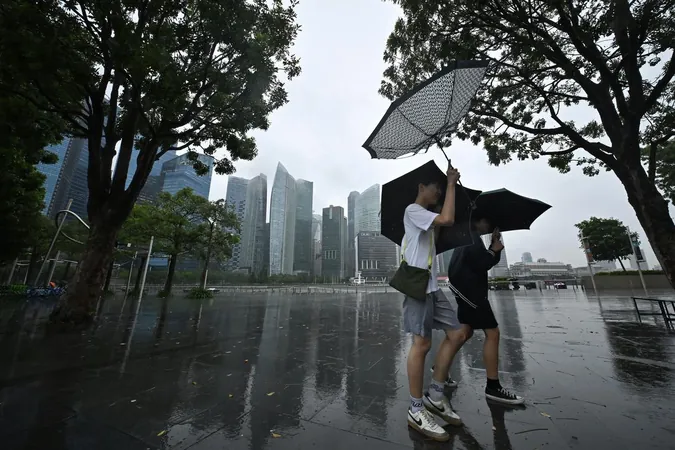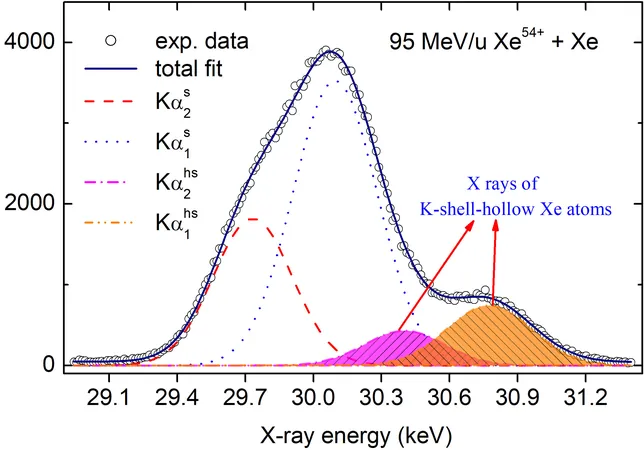
Record-Breaking Rainfall Hits Pulau Tekong in January! What It Means for Singapore!
2025-01-14
Author: Sarah
SINGAPORE - Record Rainfall in January
In an unprecedented weather event, Pulau Tekong has recorded the highest rainfall ever for January, with a staggering 241.8mm of rain falling on January 10. This remarkable amount is more than double the average rainfall across Singapore's 32 weather stations for that day and surpasses the previous record of 238.2mm set on January 30, 2011, at Pulau Ubin.
Causes of the Surging Rainfall
The recent downpours, which hit Singapore between January 10 and 13, were caused by a powerful monsoon surge. This seasonal phenomenon typically brings heavy showers to the region, and this year’s surge proved to be one of the longest and most intense seen in recent years. According to the Meteorological Service Singapore (MSS), the island-wide average daily rainfall during this period ranged significantly from 44.4mm to 120.2mm.
Impact of the Rainfall
As a result of this surge, Singapore experienced more rain during these days than what is normally expected for the entire month of January. For example, the NEA station in Kallang reported close to double the usual daily rainfall on January 12 alone.
Climate Change Concerns
While such surges are common during the northeast monsoon season, which spans from December to January, environmental experts note that as climate change progresses, Southeast Asia—including Singapore—is likely to see an increase in precipitation. Professor Winston Chow from Singapore Management University emphasized that this could lead to a heightened risk of flooding in monsoon-prone regions.
Unusual Weather Patterns
Moreover, Singapore has also recorded unusually low temperatures during this wet spell, dipping to highs of only 21.6°C in Newton and 22.8°C in Changi. Although these temperatures are still above the historical low of 19.4°C from January 1934, they reveal a shift in local weather patterns.
Looking Ahead
Looking ahead, the North-east monsoon conditions persist, but the recent surge has concluded. However, the return of the La Niña climate phenomenon between now and March could exacerbate rainfall in the typically drier months of February and March. This recurrent climatic event could intensify trade winds, leading to more rainfall due to stronger rain cloud formations over equatorial Southeast Asia.
Call to Action
As Singaporeans brace for unpredictable weather in the months to come, experts continue to call for heightened awareness and preparedness for potential flooding and environmental changes.
Stay Informed!
Is your area ready for the rains? Stay tuned as we follow this developing weather story!



 Brasil (PT)
Brasil (PT)
 Canada (EN)
Canada (EN)
 Chile (ES)
Chile (ES)
 Česko (CS)
Česko (CS)
 대한민국 (KO)
대한민국 (KO)
 España (ES)
España (ES)
 France (FR)
France (FR)
 Hong Kong (EN)
Hong Kong (EN)
 Italia (IT)
Italia (IT)
 日本 (JA)
日本 (JA)
 Magyarország (HU)
Magyarország (HU)
 Norge (NO)
Norge (NO)
 Polska (PL)
Polska (PL)
 Schweiz (DE)
Schweiz (DE)
 Singapore (EN)
Singapore (EN)
 Sverige (SV)
Sverige (SV)
 Suomi (FI)
Suomi (FI)
 Türkiye (TR)
Türkiye (TR)
 الإمارات العربية المتحدة (AR)
الإمارات العربية المتحدة (AR)